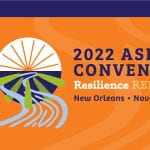
Babb, S., McNaughton, D., Light, J., & Caron, J. (2021). “Two friends spending time together”: The impact of video visual scene displays on peer social interaction for adolescents with autism spectrum disorder. Language, Speech, and Hearing Services in Schools, 52(4), 1095-1108. https://doi.org/10.1044/2021_LSHSS-21-00016
The Challenge
Adolescents with autism spectrum disorder (ASD) often have challenges participating in social interactions with their peers. These challenges are intensified for adolescents with ASD who have limited speech. As a result, participation in educational, recreational, and vocational opportunities may be limited for these individuals, and they may be more likely to experience feelings of social isolation and depression.
Augmentative and alternative communication (AAC) can assist communication for adolescents with ASD. To support peer interactions, AAC must meet 3 key challenges:
- Provide language and cognitive support to discuss past events as needed,
- Provide easy access to topic-specific vocabulary, and
- Support the individual with ASD in recognizing and taking a communication turn within a fast-paced social exchange
AAC Video VSD Technology
Video Visual Scene Displays (video VSDs) are an AAC tool that meets these challenges by providing relevant vocabulary and built-in prompts to communicate. Using a video VSD approach, a personally relevant video is added to a video VSD app. The video is paused at high-interest moments, creating a photo scene that captures the moment. Hotspots are added by drawing on the image and recording a message related to the scene, creating a VSD. When the video is viewed, it automatically pauses at each VSD, providing an opportunity to communicate.
The Current Study
In the current study, Babb and colleagues introduced video VSDs to participants with ASD and their peers as they spent time together. They provided a brief training to teach participants how to create and use video VSDs. They measured the frequency of communication turns taken by the participants before and after introducing the video VSD intervention.

Then, the participants were provided with a brief training in creating video VSDs. Together, each dyad viewed an instructional video that taught them how to (1) use the app to communicate (by providing wait time, responding to their partner’s turn, and expanding on the turn with an additional question or comment); and (2) add hotspots to the videos using the video VSD app.
The image on the right is an example of a visual scene display (VSD) created with the video VSD app. The videos with VSDs are displayed in the large right area. The left menu includes options for navigating to different videos, pausing/playing videos, and adding new hotspots to the VSDs. At key moments of interest (e.g., person displaying their colorful nail design), the video can be paused, automatically creating a still image as a VSD, and hotspots can be added with related vocabulary (e.g., “Beautiful!”).

Following the introduction of the video VSD intervention, all four adolescents with ASD (including Lexi, as shown in the graph) demonstrated an increase in communicative turns compared to baseline (Tau-U= 1.0, 95% CI [0.56, 1]). All four adolescents with ASD also increased in modes of communication used. Increased use of speech also was observed for the three participants who made use of speech prior to the intervention.
The participants with ASD also participated in generalization sessions, during which they interacted with a different peer partner both before and after being introduced to video VSDs. All participants with ASD demonstrated gains in communicative turns with this new peer partner following the introduction of the video VSD intervention.
At the end of the study, the participants with ASD, the peer partners, and educational staff all reported positive views of the intervention and the social interactions that took place following the introduction of the video VSDs. This study provides evidence that the use of a video VSD approach can support autistic adolescents in communicating on preferred topics during social interactions with their peers.
“I was going to ask for a new buddy at the end of this year. I was going to ask for a buddy that could talk, but after this, I am not. I have learned how to talk with my buddy, and she has learned how to talk with me.”
-One of the peer partners in Babb et al. (2021)

